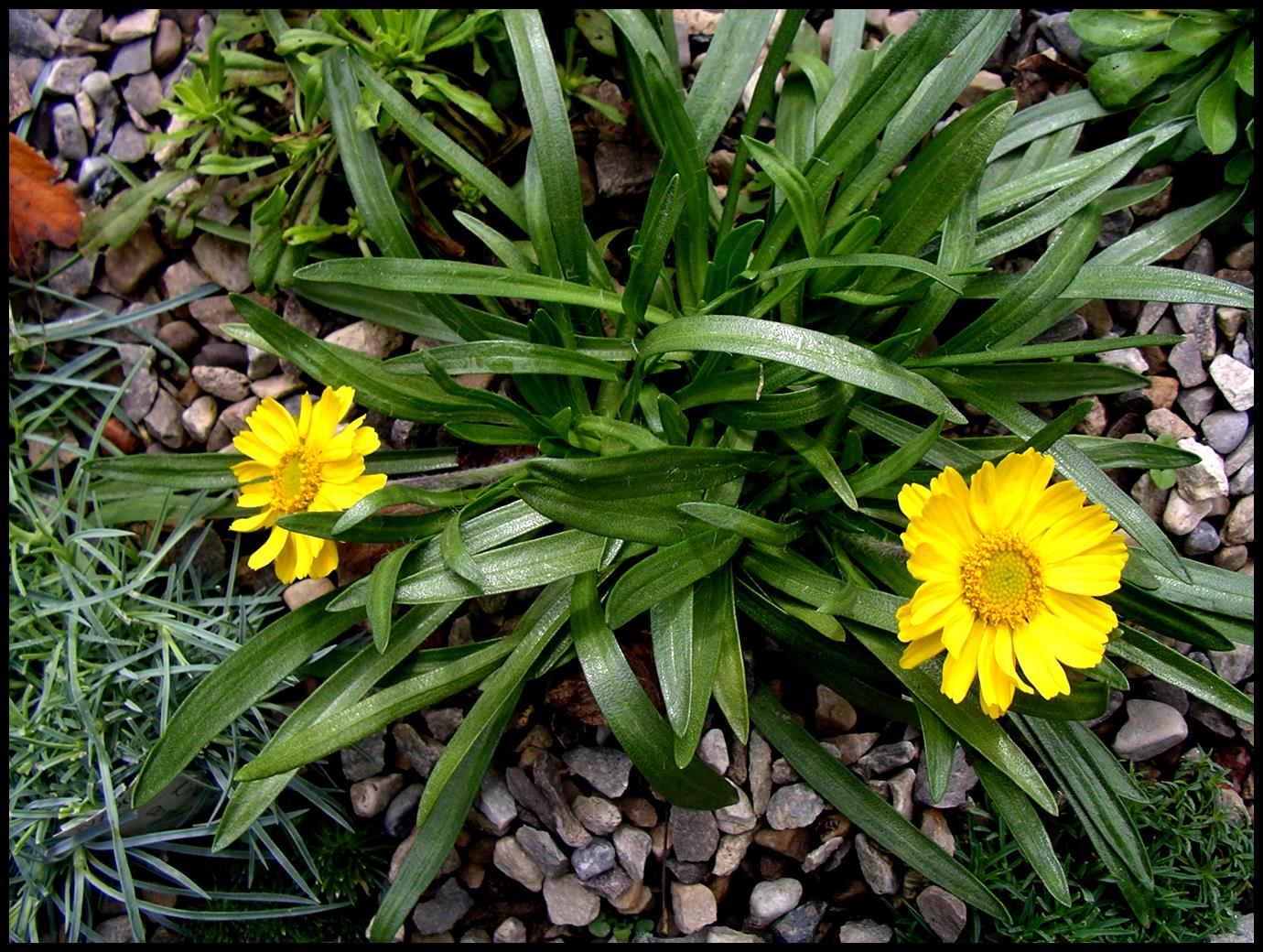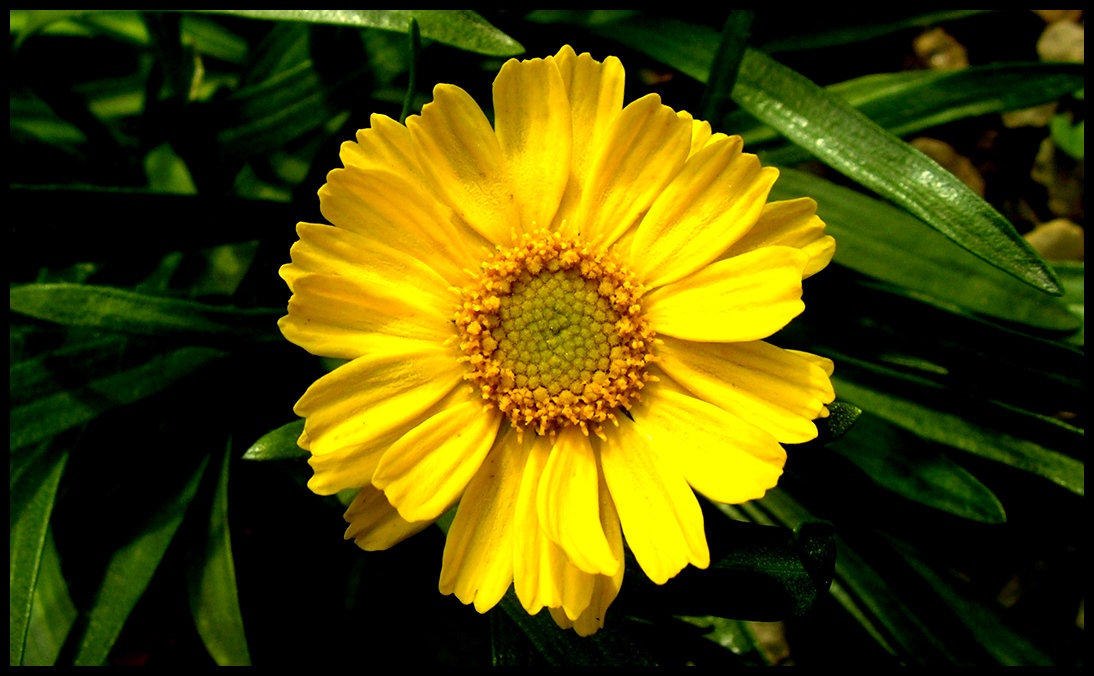Plant of the Month for December, 2013

Tetraneuris herbacea
(tet-ruh-NYUR-iss her-BAY-see-a)
General Information:
Tetraneuris herbacea, better known by it’s old name Hymenoxys acaulis, is an unusual Ontario native that is easy to grow and makes a great addition to any rock garden.

Tetraneuris herbacea; photo by Robert Pavlis
This poor plant has had quite a few name changes. It is very similar to a plant called Hymenoxys acaulis which is found in desert like conditions in the USA Midwest. H. acaulis has dull green leaves that are hairy. The species we are discussing here was renamed to Hymenoxys berbacea to distinguish it from H. acaulis, the former having bright green leaves and almost no pubescence. More recently the genus name has been reverted to the old genus name of Tetraneuris. Other synonyms are listed below.
T. herbacea also has a colourful set of common names including; Lakeside Daisy, Stemless Rubberweed, Sundancer Daisy and Manitoulin Gold.

Tetraneuris herbacea; photo by Robert Pavlis
The plant is considered threatened on both the federal (Canada) and Ontario Species at Risk lists. It is therefore illegal to collect any plant material from the wild without a permit.
In the wild this plant grows in a very specialized environment called an alvar. Alvars are naturally open rocky areas where the thickness of soil is very thin (a couple of cm). The plants are therefore growing in full sun, and very dry, not unlike alpine soil conditions. In cultivation the plants grow very well in a sandy soil mix either in the ground or in troughs. Even though they are very dry in nature, they seem to enjoy more moisture in cultivation.
T. herbacea is self-incompatible, meaning that two different clones are required to produce viable seed. The plant also reproduces vegetatively via side shoots. Plants produced by side shoots will not pollinate their mother or sister plant. When two or more populations exist, the plant does reproduce by seeds fairly easily.
The foliage is very attractive all summer long, and the plant requires little care or watering. It blooms for quite a long time, and can re-bloom in the fall.
Life Cycle: perennial
Height: 8 cm (3in), flowers at 15 cm (6 in)
Bloom Time: early summer and again in fall
Natural Range: Illinois (now extinct), Ohio and Ontario
Habitat: alvars, rocky shoreline
Synonyms: Tetraneuris acaulis, Hymenoxys acualis, Galardia acaulis, Actinea acaulis, Actinea berbacea,
Cultivation:
Light: full sun
Soil: sandy, well draining
Water: dry
USDA Hardiness Zone: 4– 9?
Propagation: seed, offsets
Seedex availability (ORG&HPS annual Seed Exchange): rarely
